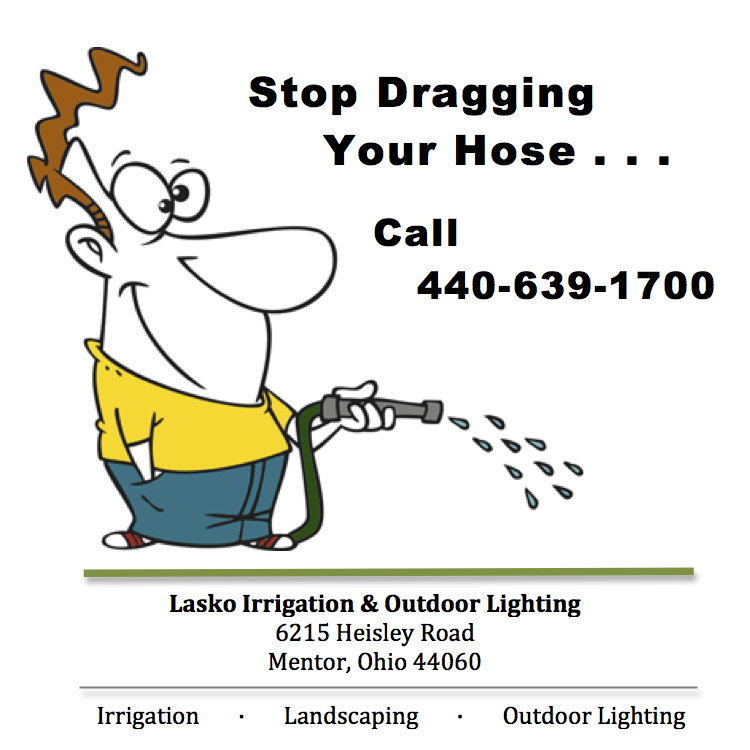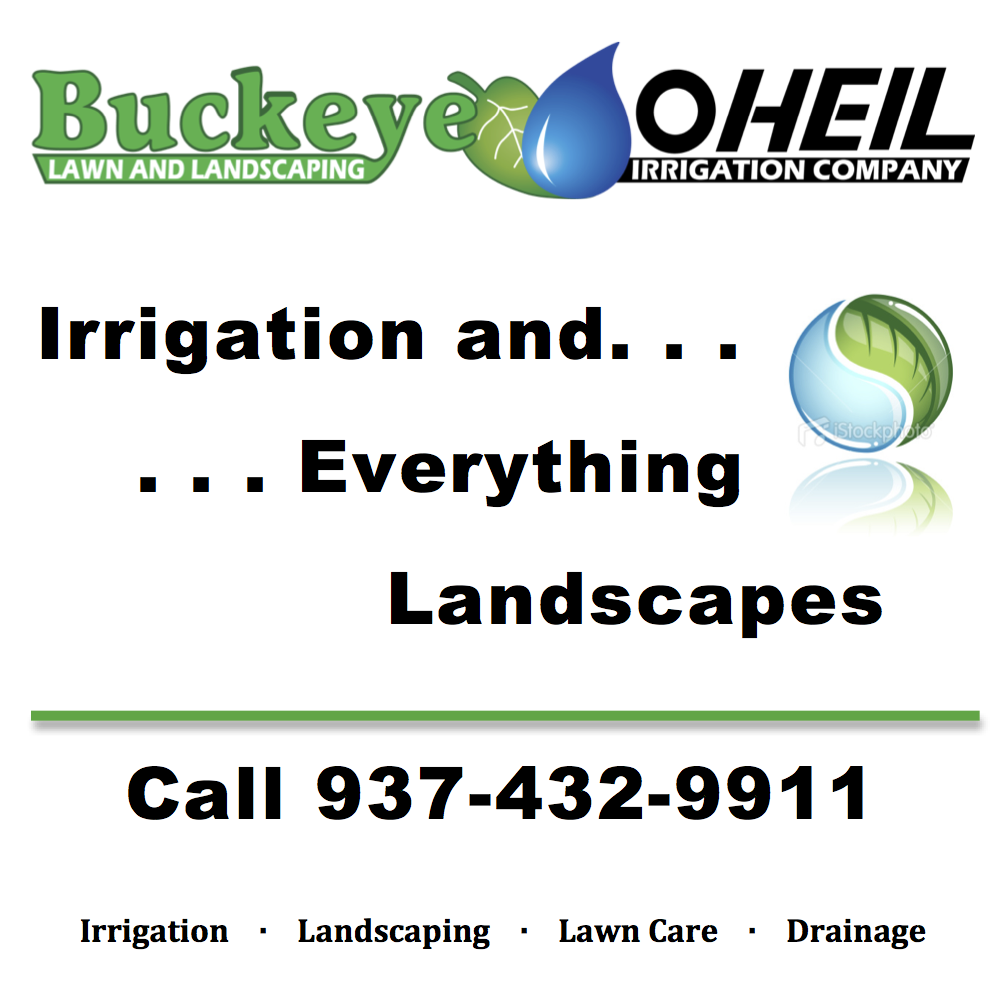
by Tom Barrett | Oct 2, 2023
Equip Expo: October 17-20, 2023
midwestGREEN: November 6-7, 2023
Ohio irrigation and lighting professionals will want to mark their calendars for two green industry trade shows happening in October and November.
About Equip Expo
This month marks the 40th anniversary of Equip Exposition, the annual green industry exhibition featuring more than 1,000 exhibits that now draws more than 25,000 attendees.

Equip Exposition
Timeline
- 1984: OPEI launches the International Lawn, Garden & Power Equipment Exposition (EXPO), the industry’s first trade show.
- 2007: OPEI merges the International Lawn, Garden & Power Equipment Exposition with the Green Industry Expo, creating GIE+EXPO.
- 2021: OPEI rebrands GIE+EXPO as Equip Exposition and opens a branch office in Louisville, Kentucky.
For more than 20 years the show has been located just over the river at the Kentucky Exposition Center in Louisville, making it a popular event for Ohio green industry professionals. Of course, it wasn’t always called Equip Exposition. (See sidebar, “Equip Exposition Timeline.”)
The Outdoor Power Equipment Institute (OPEI), expo sponsors, expanded this year’s show to include increased exhibition space, advanced education, additional entertainment, and improved logistics and food options.
Educational Opportunities
In addition to the green industry products on display and Equip Expo’s 30-acre outdoor demonstration yard, there are plenty of educational sessions for irrigation and lighting professionals. (Click on each course title for additional information.)
Basic Irrigation Repairs
Electrical Troubleshooting
Anatomy of an Irrigation System
Basic Controller Operation
Wi-Fi & Connected Device Knowledge for Green Industry Professionals
Expanding Your Business with Landscape Lighting
Also, the Irrigation Association will administer certification exams for all levels of industry professionals on the first day of the expo, Tuesday, October 17, from 12:30 to 5:30.
Equip Exposition is scheduled for October 17 through October 20, at the Kentucky Exposition Center in Louisville.

About midwestGREEN
The 2023 midwestGREEN conference (previously known as MGIX) offers a robust exhibit space, unique networking opportunities, and educational sessions with impactful speakers.
The two-day conference is sponsored by the Ohio Green Industry Association (OGIA), and OGIA members receive a substantial discount. Click here for the complete Event Guide.
Educational Opportunities
All 48 educational sessions are included in the registration cost. Here are some workshops of particular interest to irrigation and lighting professionals:
 Ohio’s Landscape Irrigation Industry Insights
Ohio’s Landscape Irrigation Industry Insights
Speaker: Tom Barrett | Ohio Irrigation Association
Over the last four years Ohio’s landscape irrigation industry has experienced some dramatic changes. In this presentation, Tom Barrett will cover current issues for those working in Ohio’s landscape irrigation industry. This presentation includes industry trends, research, best practices, and field implementation techniques.

Fire and Water
Speaker: Nick Berger | Hidden Creek Landscaping
The inclusion of Fire and Water elements within a landscape design can create captivating outdoor spaces with profound effects on the user experience. Blending fire pits, fireplaces, and fire woks with fountains, swimming pools, and spas together in a landscape design entices people to spend more time outdoors, connecting with nature, and enjoying an enriched outdoor living experience.

Innovative Lighting Design Techniques and New Technologies
Speaker: Adam Marette | Wolf Creek Company
 Latest in Equipment Trends
Latest in Equipment Trends
Speaker: Chuck Bowen | The Outdoor Power Equipment Institute
OPEI is the voice for the outdoor power equipment industry. As such, OPEI is keenly aware of the trends, challenges and opportunities facing the industry. From expanding software solutions to new equipment technologies like autonomous mowers and more efficient engines, Chuck will share what to have your eye on as we close out 2023 and prepare for 2024 and beyond.
midwestGREEN is scheduled for November 6 and 7, at the Greater Columbus Convention Center in Columbus, Ohio.

Sources:
Featured Images: Equip Exposition and Adobe (Licenses Granted)
Equip Exposition
midwestGREEN

by Tom Barrett | Sep 20, 2023
How to Avoid Wiring Problems
When Installing Landscape Lights
Low-voltage landscape lighting offers a pleasant alternative to glaring floodlights.
Artfully placed outdoor lighting can look as beautiful and natural as the landscape, whether strategically positioned to accent plants and other features or safely illuminate steps and pathways.
But any installation missteps with low-voltage wiring will likely lead to a system failure somewhere down the line. Here’s a list of dos and don’ts from lighting professionals to help you avoid problems when working with low-voltage wiring.
Don’t Skimp on Wire Connectors
Less expensive wiring materials are not best for the job. For example, twist-on wire nuts, commonly used in household wiring, are not waterproof and should not be used to splice direct-buried wire. Non-waterproof wire splices can cause current to leak to ground, resulting in the controller and transformer running hot. This significantly reduces the life of the controller.

Moonlighting?
Moonlights are a type of downlighting that mimics the moon’s soft, cool natural light.
When strategically placed high up in trees and angled downward, the light peeks through the branches rather than shining directly into a specific space. Always opt for a cool-temperature white bulb for the most natural effect.
To avoid a sloppy look, plan for wire management before installation so that no cords are readily apparent. Use appropriate tree-friendly screws, spacers, and zip ties when attaching fixture wire.
Source: Volt Lighting
It’s important to use wire connectors specifically designed for direct burial. These waterproof connectors are usually filled with silicone and provide a reliable underground wire connection. They typically consist of a twist-on cap to join the wires and a silicone gel-filled sleeve to keep moisture from entering the splice.
However, these connectors are not reusable. When repairing a bad splice, you’ll want to use a new wire connector.
Do Check Your Voltage
Even with LED lighting, it’s still important to check your voltage, which should be between 10-15 volts for LED’s. Too little voltage and your lights will be too dim; more than 15 volts could short out your system.
LEDs are not very forgiving above 15 volts, as they can disable your system quickly and without warning.
Don’t Use Frayed Wire Leads
Frayed wires can result in multiple wiring issues. If only a few pairs of your stranded wire are making electrical contact, you’ll notice a voltage drop. You’ll also risk an electrical short and create a fire hazard.
Wires that are clean and straight provide the best possible connection, resulting in fewer potential issues. Some contractors solder the wire leads together to ensure sufficient contact.
Do Use a Hub System
Lighting systems most often fail at a connection point. So fewer connection points mean fewer potential problems. A typical “daisy chain” design system creates two connection points (ergo, two weak spots) at every fixture throughout the landscape.
A hub system is a better design. Having each wire linked to a central transformer eliminates half of the potential points of failure. Troubleshooting a hub system is also much easier since you only need to locate one junction box rather than individual connections.
–Article Continues Below–

Don’t Reuse Wiring
Wiring is usually the least expensive component of any landscape lighting job, but it’s also one of the most important.
Reusing wire when retrofitting or redesigning a lighting system is a temptation contractors should avoid. When you reuse wiring, you’ve taken ownership of it, so future problems become yours.
When installing new wiring, removing the old wire is not always necessary if it’s not in your way. The exception would be if the new wires cross the old wires at any point. In that case, removing the old wiring can avoid confusion down the line.
Do Bury Wires Properly
Burying the wires is your last step. Lay the system out, hook up your lights, test your voltage, and (if possible) view the results at night before burying the lines.
Run the wires along the sides of hardscapes rather than through planting beds to avoid shovel points and other potential hazards. When you do need to cross a landscape, place wiring in a protective conduit or bury it deep enough to avoid the reach of any lawn equipment.
Sources:
Featured Image: Adobe, License Granted
Irrigation & Lighting
Volt Lighting
Family Handyman
The Lighting Zone

by Tom Barrett | Aug 9, 2023
Unique Irrigation System
“Prints” Water With Precision
More than ten years ago, Irrigreen CTO Gary Klinefelter first imagined applying commercial printing technologies to irrigation system design.
Noting that inkjet printers spray just the right amount of ink in carefully controlled patterns, he wondered why irrigation systems couldn’t do the same. As it turns out, they can.
What Is Irrigreen?
Irrigreen is a digital sprinkler system, a type of robotic sprinkler that uses printing technology to create water patterns that conform to the specific outline of any lawn. Water streams do not overlap. As a result, Irrigreen uses about half the water of conventional irrigation systems.
This unique system “prints” and executes a precise watering plan, placing water where and when needed – never on driveways or sidewalks. The system also includes a smart controller to measure weather patterns and adjust the irrigation schedule to further reduce water waste.
Check it out:
Last year Irrigreen introduced XP, the third iteration of its product, now including functionality that predicts and adapts to water pressure and flow changes. The company was founded in 2013 by Klinefelter and CEO Shane Dyer and currently holds 35 patents on its product. According to Dyer, most installations are residential, but commercial and municipal projects are on the horizon.
How It Works
Irrigreen employs one centrally placed sprinkler head for each six-to-eight heads needed for a traditional system. Each Irrigreen head has 14 nozzles to spray water at different distances. By rotating 360 degrees, each head covers about 2,000 square feet. So instead of using 40 or more sprinkler heads for the average residential property, Irrigreen needs only five heads to cover the same area.

Want to Know More?
Click the links below for online tutorials regarding Irrigreen installation, programming, and calibration:
The Irrigreen app allows homeowners and/or irrigation professionals to map out a watering pattern in any shape right from their mobile device. They can see a Google Earth view of the property and “place” digital sprinkler heads in the yard to see how many they need for full coverage. The app can also recall the last three years of rainfall and temperature data to determine how much water Irrigreen will save compared to a conventional mechanical system.
According to Scott Knowles, president of Wolf Creek Company, an Irrigreen distributor, the robotic sprinkler system “brings lawn irrigation forward into the digital age. It’s a good option for contractors who want to get out ahead of the competition by adopting advanced technology.”
Educating the Market
So far, lack of awareness has been the company’s biggest challenge. “People don’t know there is a better way to water their lawns,” Dyer said. So, to educate the market, Irrigreen developed an online tool that helps prospective customers assess the costs and benefits of installing the new technology.
“[With the online tool] we can show how much water they will save with the Irrigreen system and how much a system for their yard will cost,” Dyer explained.
Benefits to Pros
Because it uses only five sprinkler heads, the Irrigreen system streamlines installation. It also uses 80% less trenching and PVC piping – and the valves are located inside the sprinkler head — making installation about three times faster than a mechanical irrigation system.
About 80% of the company’s current business is retrofits. Most of the time, the old sprinkler heads can be capped off instead of removed, and existing piping is reused.
What the Critics Say
The Irrigreen system is not without its critics, however. Christopher Null, a technology expert and product reviewer for the online platform TechHive, voiced his concerns in January of this year. While providing an overall positive review (he found mapping the yard with the mobile app to be easy and “kind of fun”), Null stated that Irrigreen is still “a little rough around the edges.”
For instance, Null claims that the Irrigreen system must be installed from scratch and cannot be retrofitted to an existing irrigation system. Since Dyer asserts that most of the company’s current business is retrofits, perhaps Null means that retrofits require an irrigation professional and are not suitable for a DIY project.
Null said the weather-based controller was “a bit confused” during his testing. (It failed to skip the watering during a freak hailstorm and cold snap.) Also, Null thought the manual controller was disconcertingly unsophisticated, “a bare circuit board mounted inside a plastic box” with three poorly labeled buttons. “Hang on to the (very beta) manual if you ever plan to open the box.”
The online quote tool indicated that Null’s 6,100-square-foot yard required five sprinkler heads totaling $3,280. However, he was confident that his yard would need at least eight heads – still considerably less than the 20 mechanical heads in his existing system.
Null concluded that Irrigreen is promising but still “has some growing to do.”
Most of the comments on Reddit indicate that the company’s technology is excellent, but its customer service is abysmal.
You Be the Judge
Is Irrigreen the wave of the future, or does it still have some hurdles to overcome? As an irrigation professional, you be the judge.
Sources:
Featured Image: Irrigreen
SG Voice
Forbes
Minneapolis Business Journal
PR Newswire
TechHive

by Tom Barrett | Jul 12, 2023
Preparation Is Key to
Avoiding Summer Hazards
Keeping your irrigation and landscaping crews safe during the busiest time of the year can be challenging.
But heat stress, stinging and disease-carrying insects, and poisonous plants are all seasonal hazards your crew members will face.
Did you know that, according to the Bureau of Labor Statistics, the green industry is one of the more dangerous in the U.S.? The occurrence of nonfatal occupational injury or illness is 87% higher for landscapers than for private industry as a whole. And the rate of fatal injuries for landscaping services is five times higher.
You can take steps to prevent an unfortunate incident from occurring on your watch.
Be Prepared
Does your company provide regular and ongoing safety training? Reinforced training is a critical component of an overall safety protocol. Be sure to augment company-wide training sessions (such as regarding heat-related illnesses) with daily safety reminders.

Creating a Culture
of Safety
Is safety part of your company’s culture? If not, here are four steps you can take to change that:
- Follow OSHA instructions precisely. Learn about all local, state, and federal safety regulations to proactively prevent problems.
- Develop documented safety policies based on hazard assessments of standard job sites.
- Create a solid training program around your safety policies to address all potential hazards your workers may encounter.
- Evaluate training effectiveness. (For instance, you could administer a brief quiz before and after training sessions to determine if your workers have retained the information.) Observe your crews on job sites following training to ensure safety policy compliance.
Source: Irrigation & Lighting
And if your crew members have experienced any close-call incidents, incorporate those situations into your training and safety policies as well.
Keep ‘Em Cool
Make sure you provide your crews with the proper gear and supplies:
- Plenty of water
- A first-aid kit
- Wasp spray
- Sunscreen
- Access to an air-conditioned work vehicle or cooling towels
If the job site offers no shade, have a canopy or tent available to provide some protection. Offer crew members the option of wearing light-weight long-sleeved shirts and wide-brimmed hats to protect them from the sun. (Light-colored breathable fabric is the best choice for company uniforms.)
Of course, part of being prepared involves starting and finishing early this time of year. Ramp up your site visits on the hottest days to double-check your crews’ safety. Your workers are busiest now, and it’s easy for them to lose track of time, so designate a crew member to encourage water breaks. On days of extreme heat, allow crews to knock off early.
OSHA and NIOSH have developed a Heat Safety Tool app that helps landscaping crews assess heat risk, identify signs and symptoms of heat-related illness, and administer first aid in a heat-stress situation.
Poisonous Plants and Pests
Poisonous plants, stinging insects, and disease-carrying pests should also be on your radar. The key to avoiding all of these problems is to minimize skin exposure.
–Article Continues Below–

Workers who come in contact with poison ivy, poison oak, and poison sumac can promptly use preventive wipes to remove the urushiol oil, so make sure these wipes are part of your crews’ PPE. They also must clean any clothing and tools that have come in contact with the plants. Make sure they never burn any of these poisonous plants, as breathing in the oil particles results in an immediate medical emergency.
Important to Know
If a first responder or your company representative reports a safety incident – a legal requirement in some circumstances – the result is often an OSHA inspection.
 You may be cited for failing to comply with OSHA standards if your company does not have a documented safety program. The current penalty for a first-time safety violation is $15,625 per citation.
You may be cited for failing to comply with OSHA standards if your company does not have a documented safety program. The current penalty for a first-time safety violation is $15,625 per citation.
Crews can minimize the risk of disease-carrying pests by removing all mosquito-breeding standing water at the job site. Since rodents and wildlife often carry ticks, removing leaf litter or overgrowth will minimize the risk of contact. Wasp and hornet sprays, insect repellents, and even mosquito netting can all be included in your safety supplies.
Set a Good Example
The safety chain of command always begins with the business owner or manager. If you’re not committed to safety, your workers will know. Be sure to do whatever you ask them to do. For instance, show up on job sites with the same PPE you expect your crews to wear.
Commit to your safety training schedule, even if your projects are under time constraints. Show your crews that you prioritize their safety.
The safety of your irrigation and landscaping crews is a big responsibility. By mitigating common hazards, you’ll demonstrate to your workers that you’re invested in their well-being.
Sources:
Featured Image: Adobe, License Granted
Irrigation & Lighting
American Journal of Industrial Medicine
Lawn & Landscape

by Tom Barrett | Jun 7, 2023
Audits Help Customers Save Water
During Smart Irrigation Month
Summer is here, and Smart Irrigation Month is fast approaching. What better time to sell your customers on the benefits of irrigation system audits?
An audit can provide extensive insight into a homeowner’s system, ensuring that water is applied properly to each area of the landscape. Successful audits deliver the information needed to create an irrigation schedule that will maximize system efficiency and save your customer money. Even systems that are routinely maintained can benefit from an occasional audit.
First Things First
Properly performed irrigation audits always begin with a system inspection. Working from a site map will help you thoroughly analyze the irrigation system’s mechanics, starting with the point of connection. Closely examine all vital information, including backflows, flow rates and pressure.
Faulty or degrading components are often easily identified, but it’s also important to check sprinkler head alignment. Improperly aligned heads produce spray patterns that can misdirect water to non-targeted areas and seriously compromise efficiency.

Getting Certified
The Irrigation Association offers Certified Landscape Irrigation Auditor (CLIA) training for irrigation contractors. The certification process involves two steps:
- Successfully completing the CLIA course, and
- Passing the three-hour written exam on irrigation audit procedures, soil-plant relationships, irrigation scheduling and equipment/technology.
(Note: Submitting an independent water audit is no longer a requirement to become certified through the IA.)
Certification allows contractors to differentiate themselves as providers of the most professional level of service.
Interested? To enroll in the online course, click here.
Common sprinkler head issues include:
Once you’ve identified problems and made the necessary repairs, it’s time to move on to the performance test.
Performance Testing
Precipitation rate (PR) and distribution uniformity (DU) are the two primary performance measures for an irrigation system. Most auditors evenly space their catch-cans in a grid-like pattern across each individual irrigation zone.
Recommended catchment device spacing is as follows:
- Fixed spray heads – place catch-cans halfway between sprinkler heads.
- Rotor sprinklers with less than 40-foot centers – place catch-cans every one-third of the distance between heads.
- Rotor heads with greater than 40-foot centers – place catch-cans every one-fourth of the distance between heads.
- For irregularly shaped areas, place cans in a uniform grid, pattern five to eight feet apart for fixed spray sprinklers and 10 to 20 feet apart for rotor sprinklers.
After you’ve placed the catch-cans across an irrigation zone, run that zone for 30 to 60 minutes. (The longer the run time, the more accurate your results.) Then measure and record the water depth for each catchment device. Repeat the procedure for each zone.
–Article Continues Below–

Precipitation Rate Calculation
Calculate PR by averaging the depth of water in your catch-cans after one hour of run time. For example, if the average depth of 20 cans is 0.75 inches and you ran the zone for 30 minutes, the PR would be 1.5 inches per hour.)
After you’ve calculated the PR for each zone, you can set the run times. For instance, if you want to apply 0.5 inches of water in one irrigation cycle and the PR is two inches per hour, you would set the zone for 15 minutes.
Distribution Uniformity Calculation

About Smart
Irrigation Month
Smart Irrigation Month was created by the Irrigation Association (IA) as an annual initiative to promote the social, economic and environmental benefits of efficient irrigation during the month of July.
First launched in 2005, Smart Irrigation Month has gained traction each year, as homeowners and the green industry recognize the importance of efficient irrigation during the hottest summer months.
The IA offers a host of Smart Irrigation Month resources for marketing your company as a leader in water-efficiency practices with customers, business partners and peers.
Calculate DU by first averaging the depth of the lowest 25 percent of your catch-cans, then divide that figure by the overall average of all cans.
In other words, if you used 20 cans per zone, and the average of your five lowest cans is 0.5 inches, then you’d divide 0.5 by 0.75 to give you 67 percent. Typically, a DU of 70 percent is considered excellent. Irrigation systems with lower than 60 percent uniformity produce uneven distributions and should be adjusted for more uniform coverage.
Helpful Tools
Audit Guidelines to assist irrigation professionals with fieldwork procedures, techniques, and performance calculations are available through the Irrigation Association.
Looking for a comprehensive irrigation audit worksheet? Click here for electronic format. Click here for a printable form.
Selling It
Irrigation audits are the most effective way to ensure that system components are being used properly. According to industry experts, the typical savings homeowners can expect from a water audit is between 40 and 60 percent.
With in-ground systems and running at night, it’s easy for problems to go undetected. Auditing addresses those problems; it optimizes your customers’ water usage while still maintaining their landscape’s appearance and saving them money — good for them and good for the planet.
Sources:
Featured Image: Creative Commons photo by John Johnston
Irrigation & Lighting
North Carolina State University Extension
Lawn & Landscape

by Tom Barrett | May 10, 2023
Irrigation Professionals Benefit from a
“Client-First” Approach
Spring and summer are critical for the green industry.
As an irrigation contractor, the next few months are likely your busiest season, when your customers depend on your expertise to assist them in keeping their landscapes green and healthy.
Customer relations are the lifeblood of contracting; small businesses rely on repeat customers and word-of-mouth referrals. Loyal clients can leave positive online reviews resulting in business growth and increased service opportunities.
Customer Service Basics
Let’s start with a review of the basics straight from the customer service textbook:
- First impressions are critical. You must present yourself professionally whenever you’re meeting potential clients. Never be late — ever. Remain courteous at all times.
- Be accessible! Make it easy for your customers to reach you. Return phone calls and emails promptly. Keep all communications clear and concise.
- Manage an angry customer with tact and finesse. Always remain calm, recognizing that the client is most likely mad about the situation – not you personally. Listen carefully so you can properly address his concerns. By successfully resolving such conflicts, you’ll make life-long customers.
- Mistakes happen. But you can turn a misstep into a positive customer experience by addressing it promptly and responsibly. Don’t make excuses. Ask how you can fix the mistake and then do it.
- Respect your client’s property by cleaning up as you work. Never leave your customer with a mess.
–Article Continues Below–

Going Above and Beyond
Upgrading your customer service from good to exceptional will help your irrigation business stand out from the competition. If you’re ready for that, here are some of the most important ways you can go the extra mile for your clients:
Empower Your Crew
Take as little time as possible to make the right decisions for the job. Make sure your crew members use their time efficiently. It helps to train and empower them to make critical decisions. Customers should not have to ask the crew leader, who then must ask the account manager, who then must ask you or someone else. Properly trained crew members should be able to answer those questions and repair that sprinkler head.

Is Your Company’s Culture
Customer-Centric?
You can take your company’s customer service standards to the next level by ensuring that your company culture reinforces the critical value of the client. Here are some tips for creating a customer-centric culture for your irrigation business:
- Define the behaviors and skill sets that support exceptional customer service and align those behaviors with your business practices.
- Identify areas where your current business culture does not reflect a “customer-first” approach. Realign these areas to support the desired behaviors.
- Advise your staff of the ways the organization is changing its structure and business strategy to become more client-focused. Then enlist their help.
- Ensure all employees are engaged with their work, especially front-line workers. Employee engagement and customer satisfaction are closely correlated.
- Reward exceptional customer service. Even small gestures or recognition by peers can have a big impact.
- Hire individuals who uphold your service goals. Create a profile for hiring with input from employees who provide the best customer service, and evaluate applicants for both service aptitude and irrigation experience.
Spend Time at the Site
Arrange for you or your account managers to visit client properties regularly, especially if a landscape is sophisticated or the customer is highly involved. Spending time on the property boosts the customer’s confidence in your work. You can drop the homeowner a quick note explaining any issues you’ve identified and your plans to address them.
Communicate Always
Keep in touch with your customers, even during the off-season, so they remember your business. Regular communications provide opportunities to evaluate the property and make suggestions, such as system upgrades. Social media posts and monthly newsletters are great ways to keep your clients current on your business, the irrigation industry, or general landscape information. Encourage referrals and repeat customers by including discount codes.
Customize Your Services
Cater to each client’s individual needs. Don’t treat them generically. Make an effort to assure your customers that you and your team know exactly what they want. Build rapport by welcoming client feedback and then implementing it. Your whole crew should know your customers by name.
Putting It All Together
In today’s competitive environment, it takes more than common sense and courtesy to rise to the top of the customer service game. Extending yourself and empowering your crew to go the extra mile on behalf of your clients will position your irrigation business as an industry leader.
Sources:
Featured Image: Adobe, License Granted
Contractors Reporting Services
Hydro-Rain
Irrigation & Lighting

by Tom Barrett | Apr 12, 2023
Ramp Up Your Lighting Business
This Spring
The popularity of landscape lighting for residential properties shows no signs of slowing down.
Whether it’s used to illuminate pathways, highlight landscape features, improve security, or create an inviting atmosphere for guests, outdoor lighting has become a go-to improvement for homeowners. Here are five of the latest landscape lighting trends:
LED Lighting
Not surprisingly, more homeowners are switching to LEDs for energy efficiency and longer lifespan. LED bulbs last around three to five times longer than conventional fluorescent bulbs and 30 times longer than incandescent bulbs. [See sidebar, “Incandescent Bulb Ban.”]
By switching to LEDs, your customers can expect lower utility bills, less maintenance, reduced carbon emissions, and less waste from the disposal of burned-out bulbs. And since LED lights are now available in a variety of colors, you can customize architectural lighting to match the style of your customer’s home.

Incandescent
Bulb Ban
In May of last year, the Department of Energy issued a new ruling that requires lighting products to meet new standards. As a result, the manufacture and sale of most incandescent and halogen products will be phased out by August 1, 2023.
The new measure bans the sale of bulbs that produce less than 45 lumens per watt. However, incandescent and halogen bulbs purchased before the phase-out date may still be used.
Directional LED lights can be used for dramatic effects, such as highlighting an accent area or creating contrast. Also, LEDs are more durable and much cooler than other bulbs, so they’re safe around children, pets and plants. What’s more, they don’t attract insects, making outdoor living spaces more enjoyable.
Solar Lighting
Homeowners looking for the most cost-effective and sustainable way to enhance gardens and walkways have made solar lighting very popular right now. The huge advantage of solar is the zero operating cost. While the initial outlay for a quality solar fixture can be high, your customers can recoup this cost pretty quickly.
There are a couple of drawbacks, however. Solar lights recharge just fine in direct sunlight, but partial shade, rain or overcast skies can diminish their effectiveness, resulting in low light output or short running time.
Most solar landscape lights are less bright than electric fixtures. They provide ambient lighting, tending toward a bluish hue. In other words, they’re ideal for garden pathways, but their use as security lighting is limited. According to Bob Vila, the average solar path light delivers the equivalent of a 40-watt light bulb.
Smart Lighting
Smart outdoor lighting systems allow homeowners to control their lights by phone, tablet or computer. All lighting can be adjusted by app instead of a control box. Timers can be set, lights can be brightened, dimmed, or color changed with a few taps on a smart device.
—Article Continues Below—

Smart lighting systems offer increased security, as they can be pre-programmed to turn on and off automatically, whether your customer is home or away. Notifications can be sent directly to the homeowner’s phone in the event of a lighting malfunction.
Smart systems can also be equipped with motion sensors — perfect for illuminating pathways.
Color-Changing Lights
Color-changing lights add a unique touch to your outdoor space. Your customers can choose from a variety of colors — even create custom combinations. This type of lighting is often reserved for special occasions, such as holidays, but can be used at any time of year.
Christmas, St. Patrick’s Day, Halloween, and Independence Day can all be colorfully celebrated with just a few clicks on a smartphone. Sports enthusiasts use color-changing outdoor lights to root for their favorite teams on game day.
Ambient Downlights
The warm, welcoming effect of downlighting is very trendy right now. Downliights are designed to simulate the natural light emitted from the sun, moon and stars. Mounted on walls, ceilings, or trees, they highlight a property’s ground-level features by creating a downward illumination.
Downlighting is used less for security and more to create ambiance and accentuate a home’s exterior layers and textures. It can be installed on just about any overhead structure. An added benefit is that downlighting keeps light pollution at a minimum.
Sources:
Featured Image: Adobe, License Granted
SFGATE
Hevilite
AP News

by Tom Barrett | Mar 8, 2023
EPA Program Has Transformed
Landscape Irrigation Industry
Over the last 16 years, the EPA’s WaterSense program has transformed the landscape irrigation market with products that save water, energy, and money.
The program’s accomplishments include:
- Helping Americans save 6.4 trillion gallons of water – the equivalent of water used by all U.S. households in eight months;
- Saving more than $135 billion in water and energy bills through the use of WaterSense products and practices;
- Reducing the amount of energy needed to pump, treat, and heat water by 754 billion kilowatt hours – enough to power 70 million homes for one year.
Irrigation Certification and Labeling
WaterSense began certifying and labeling weather-based irrigation controllers in 2011 and sprinkler heads in 2017. Soil moisture sensors joined the suite of WaterSense-labled irrigation products in 2021. All of these WaterSense products can be combined to achieve even more efficiency and savings.

Fix a Leak Week
This year, the EPA’s annual Fix a Leak Week runs from March 20 through 26. This is the best time to remind your customers to plug those water-wasting household leaks, including any leaks in their irrigation system.
Encourage them to schedule their Spring tune-ups early before the seasonal rush. The sooner you correct any problems, the better!
Also, refer your customers to the EPA’s Fix a Leak resources page for information about identifying and repairing common household leaks.
The EPA estimates that replacing a standard clock-based irrigation controller with a WaterSense-labled controller can save an average home up to 15,000 gallons of water annually. An additional 5,600 gallons of water can be saved by switching to a WaterSense sprinkler head.
To date, more than 1,100 product models of sprinkler heads, irrigation controllers, and soil sensors have earned the WaterSense label for efficiency and performance.
Drip Irrigation
In 2018, WaterSense created two drip irrigation guides, offering design, installation, and maintenance tips. The guides were designed to assist homeowners and irrigation professionals in maximizing outdoor water efficiency while enhancing the health and beauty of the landscape.
During Covid

Ohio IA Represented
at Advocacy Day
JC Wheaton, Tom Barrett, and Scott Knowles represented the Ohio IA at Ohio Green Industry Advocacy Day on February 22, 2023. The Ohio IA members met with their local legislators to discuss issues most pertinent to the state’s irrigation industry.
In addition, WaterSense developed new social media tools to help promote the use of mulch and drought-tolerant plants. And a new turf grass page on the EPA’s website promoted smart lawn management decisions.
Also in 2020, WaterSense collaborated with the Alliance for Water Efficiency (AWE) to offer a series of free public webinars on various outdoor water topics. More than 400 attendees learned about plant choices, soil amendments, landscape transformations, and the benefits of soil moisture sensors.
Want to Become WaterSense Certified?
Becoming a certified WaterSense professional demonstrates to your customers that you have the knowledge and experience to help them save both water and money. Click Here to learn about the program’s benefits and requirements.
Sources:
Featured Image: Irrigation Association
WaterSense Accomplishment Reports 2017-2021

by Tom Barrett | Feb 15, 2023
Applications Due by March 31, 2023
Do you know an enterprising college student who’s interested in pursuing a career in irrigation?
He or she may be eligible for an Anthony W. “Tony” LaFetra Scholarship, available through the Irrigation Association and sponsored by Rain Bird.
The IA created its Workforce Development scholarship program in 2017 to help promote irrigation education and provide financial support to worthy candidates pursuing irrigation-related degrees. These scholarships range from $1,000 to $2,500 and are awarded based on:

Encourage Ohio
Students to Pursue Irrigation
Out of 107 Irrigation Association scholarships awarded since 2017, only two Ohio students have received the prize. We can do better!
Help position our industry for future growth by encouraging students at local two- and four-year institutions to pursue careers in irrigation. Spread the word that these scholarships are available for worthy individuals.
Don’t delay! Application deadline is March 31, 2023.
- Student’s letter of intent,
- Student’s financial need,
- Three reference letters,
- Student’s resume, and
- Student’s current or completed irrigation-related courses.
About the Scholarship
Through 2026, the IA’s scholarship program is being sponsored exclusively by Rain Bird Corporation. The program has been renamed the Anthony W. “Tony” LaFetra Scholarship Program in honor of Rain Bird’s late president and CEO. The two top scholarship recipients will be designated as Anthony W. “Tony” LaFetra scholars. Last year Troy Bowman, a Cincinnati State student, was one of those top recipients.
Eligible students must:
- Be a U.S. citizen;
- Be currently enrolled (undergraduate or graduate) at a U.S. vocation or technical school, university, community college, or similar institution of higher learning with a graduation date of December 2023 or later;
- Have completed or be currently enrolled in a class with an irrigation-related curriculum;
- Not be a prior recipient of this award;
- Have a cumulative grade point average (GPA) of at least 2.5 (on a 4.0 scale); and
- Demonstrate financial need.
Scholarship applications, instructions, and additional information are available here.
Sources:
Featured Image: Adobe, License Granted
Irrigation Association
Irrigation & Lighting

by ohioia_e612r2 | Feb 9, 2023
Join Us February 22, 2023 at the
Ohio Statehouse for Advocacy Day!
Join the industry partners of OhioPLANT in the upcoming Green Industry Advocacy Day scheduled for Tuesday, February 22, 2023 at the Ohio Statehouse in Columbus. Show your organization is part of a multi-billion dollar industry in Ohio and the importance of having a presence with Ohio’s new 135th General Assembly.
OhioPLANT is a coalition of pesticide, landscape, agriculture, nursery, and turf professionals who collaboratively advocate on behalf of those professions represented. This unified voice has made OhioPLANT the go-to resource for our state agencies and elected officials when discussing matters impacting these industries.
Tentative schedule of the day:
| 8:30 – 9:30 AM |
Legislative Breakfast Reception |
| 9:30 – 10:00 AM |
OhioPLANT Update – Tony Seegers. Esq. |
| 10:00 – 10:30 AM |
Guest Speaker TBD |
| 10:30 – 11:00 AM |
Guest Speaker TBD |
| 11:00 AM and on |
Appointments with legislators
Boxed lunch at your convenience |
Ohio Green Industry Advocacy Day is hosted by industry partners of OhioPLANT.
Don’t miss this unique opportunity to network with green industry colleagues, meet with your state legislators, and make your voice heard on issues critical to irrigation professionals.
 This year, our participation in this grassroots effort is more important than ever before.
This year, our participation in this grassroots effort is more important than ever before.
House and Senate term limits mean there will be many new faces in the state legislature, as well as in committees and chairs. Let’s make ourselves known to them!
Free to Ohio IA Members
Ohio Green Industry Advocacy Day is FREE to Ohio IA members.
As one of the events sponsors, we’re counting on you. Legislative and regulatory advocacy is one of the key benefits of Ohio IA membership which is strengthened by your active participation.
Advocacy Day provides a unique opportunity to build relationships with both green industry business partners, and members of the Ohio legislature and their staff. After all, who can tell our story better than you?

REGISTRATION
Free to Ohio IA members


What to Expect
The morning session will feature key legislative speakers, after which attendees will be briefed on discussion issues for the legislative meetings scheduled in the afternoon.
The afternoon meetings with elected officials provide an opportunity to discuss key irrigation issues (like water quality, water quantity, and environmental reforms) and state policymakers. Our legislators must hear from us in order to make informed decisions about issues critical to our industry.
Sources:
Featured Image: Pixabay
Ohio Nursery and Landscape Association
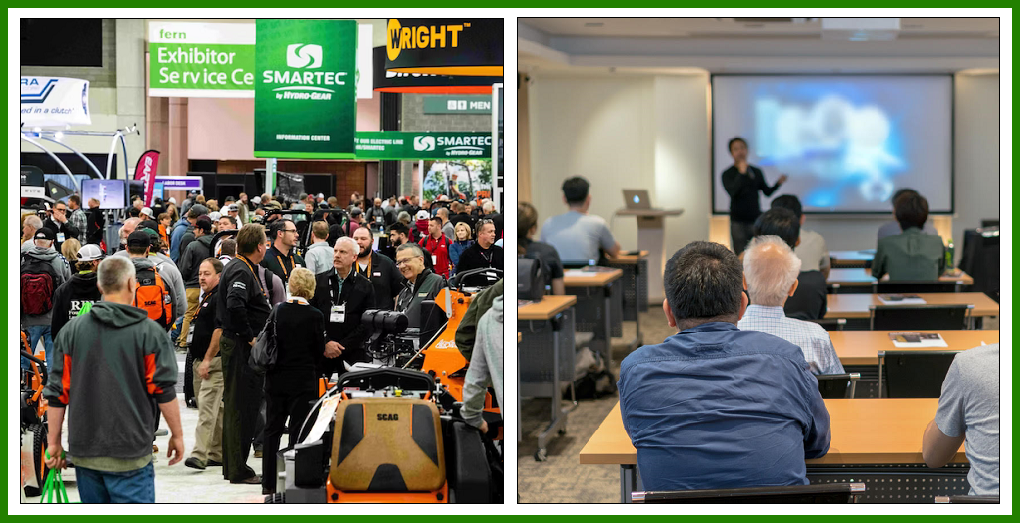

 Ohio’s Landscape Irrigation Industry Insights
Ohio’s Landscape Irrigation Industry Insights

 Latest in Equipment Trends
Latest in Equipment Trends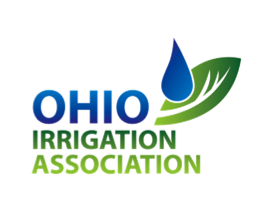

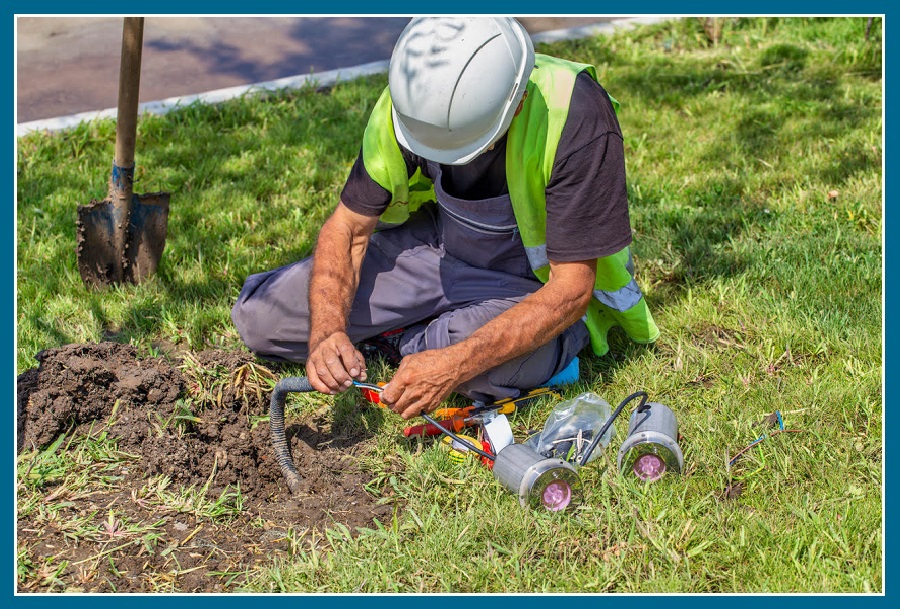


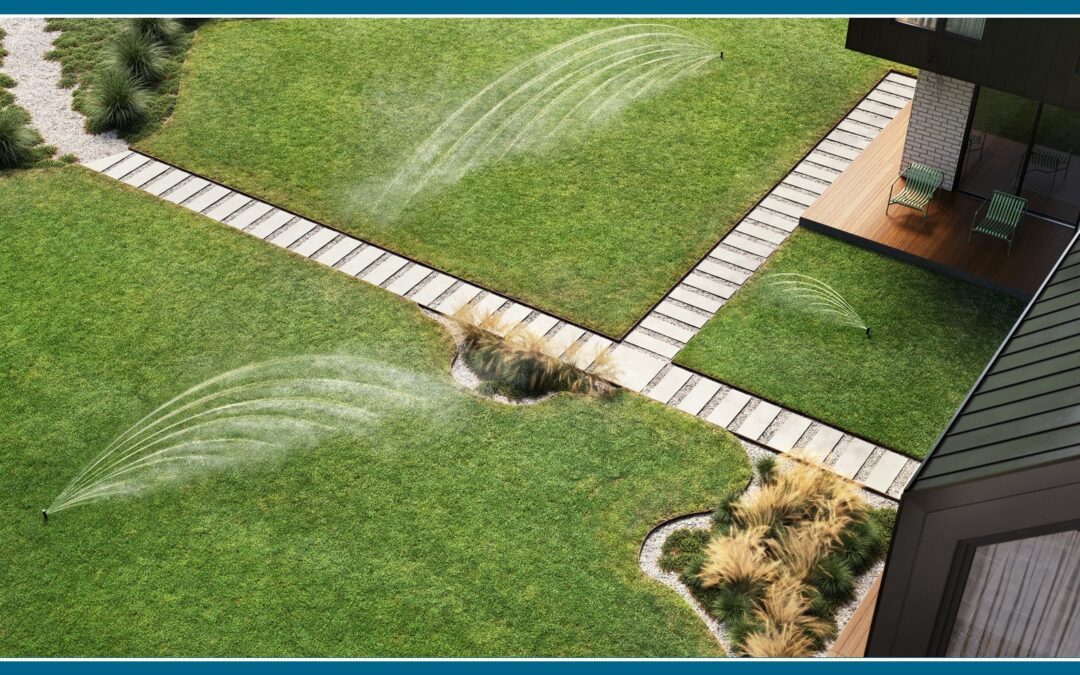
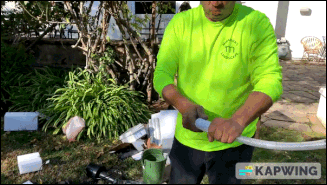
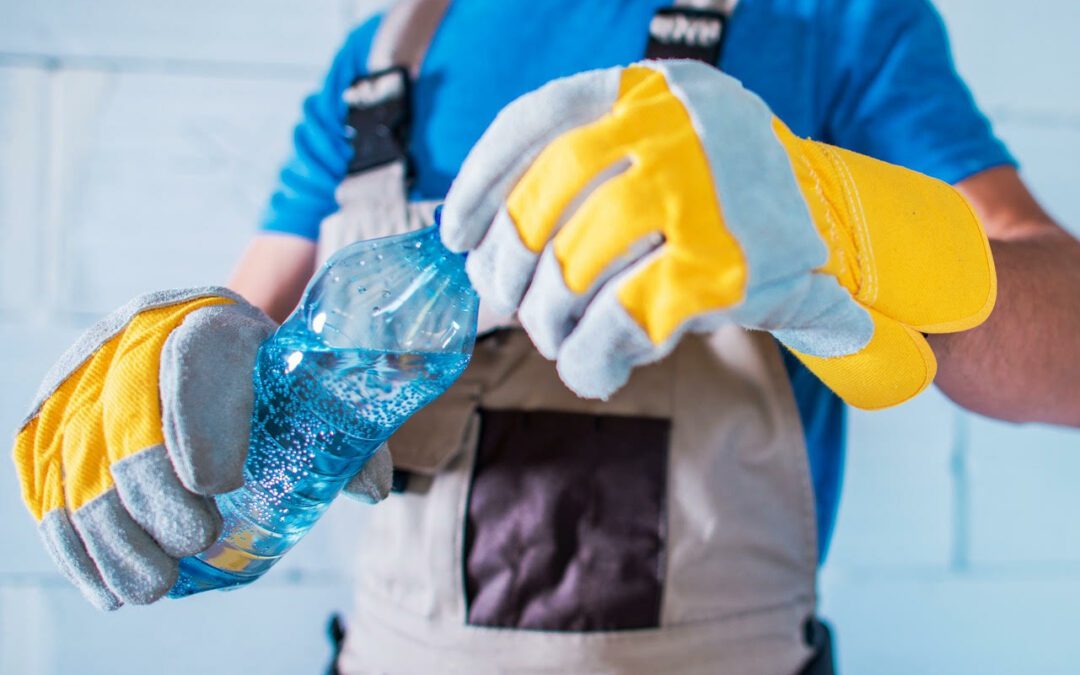

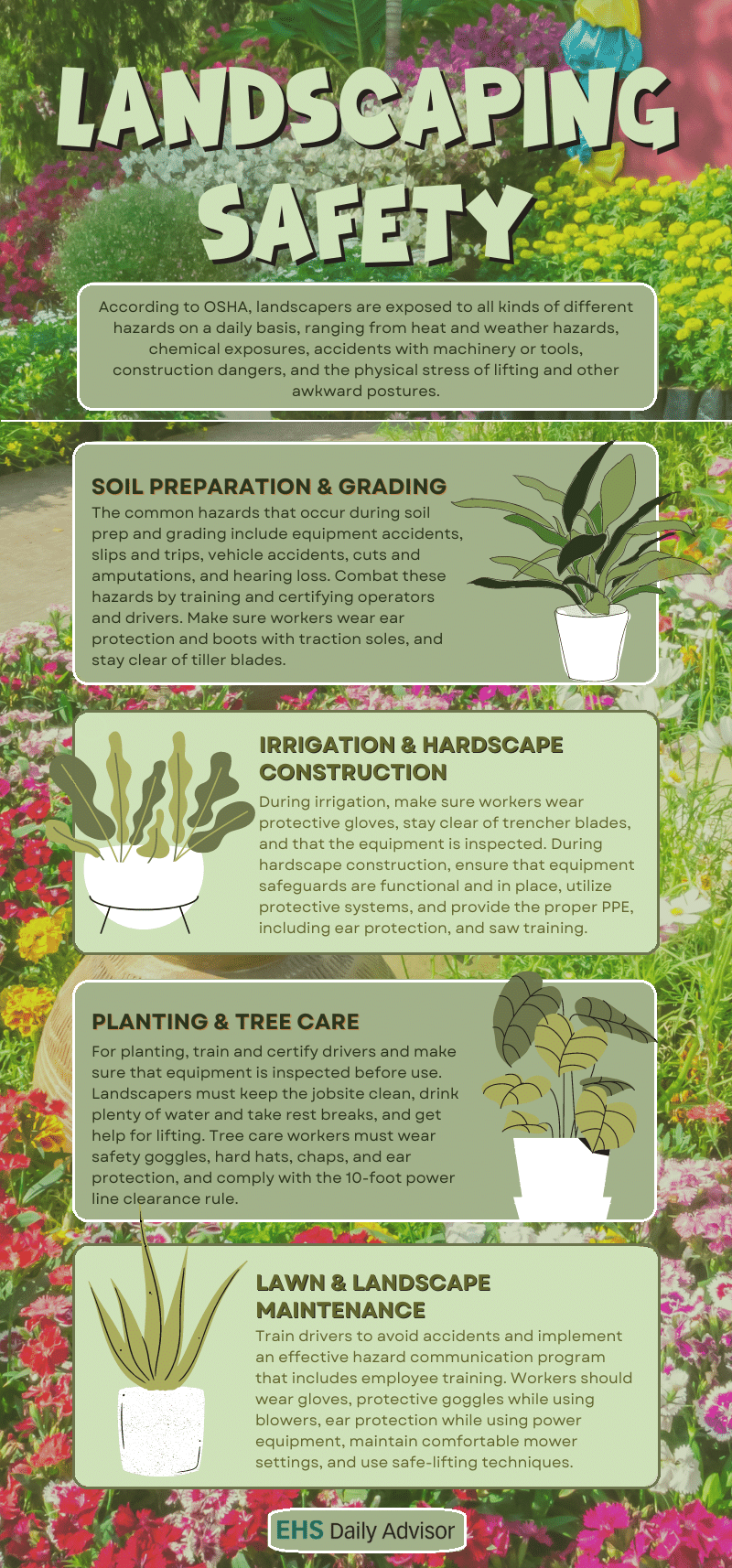
 You may be cited for failing to comply with OSHA standards if your company does not have a documented safety program.
You may be cited for failing to comply with OSHA standards if your company does not have a documented safety program. 


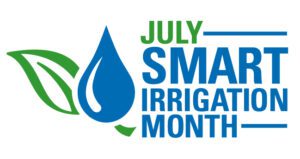

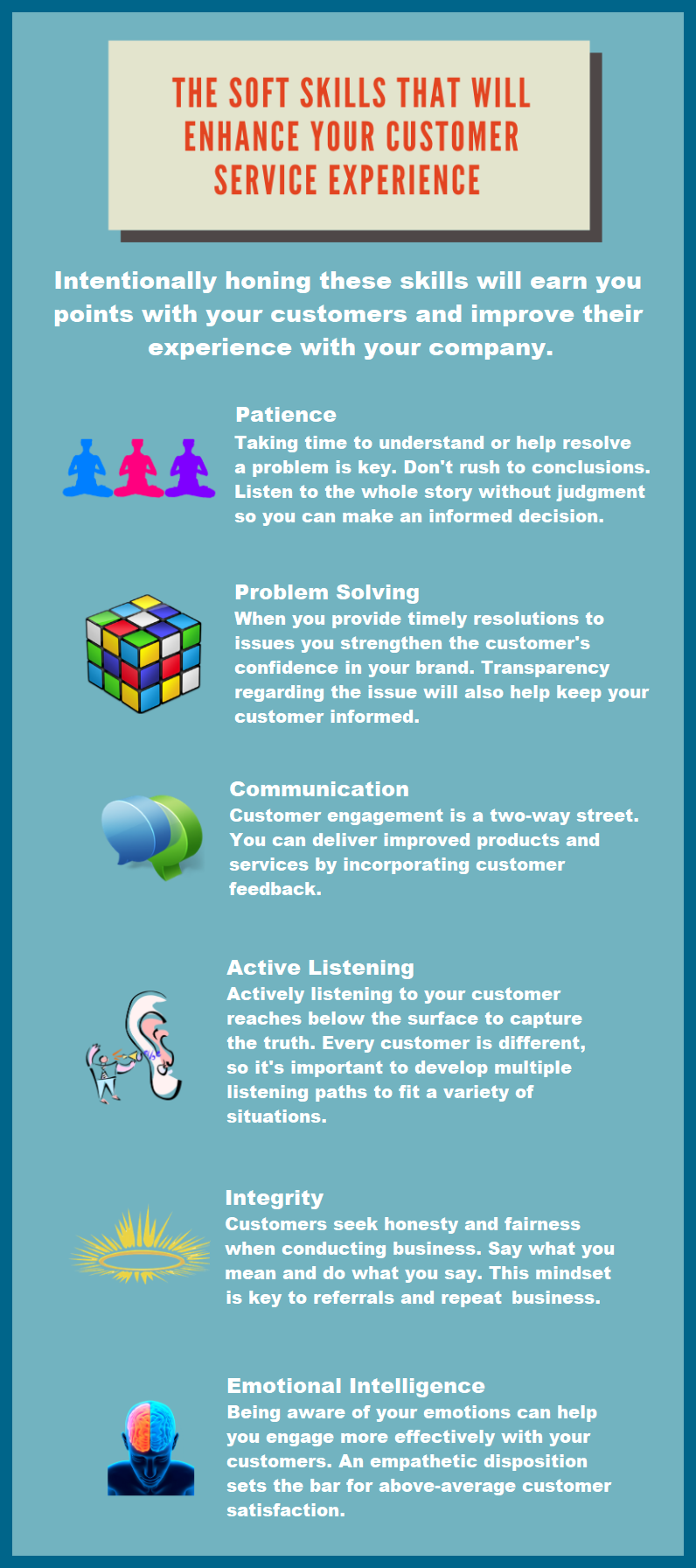


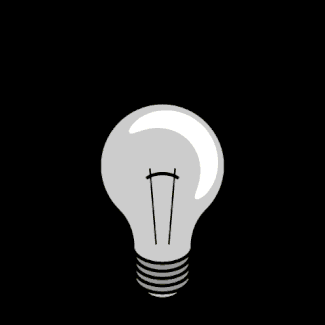

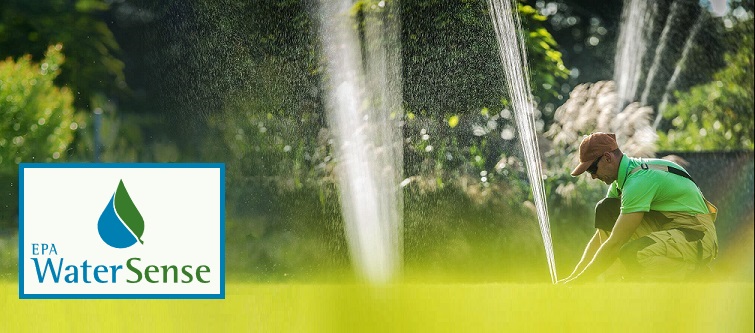
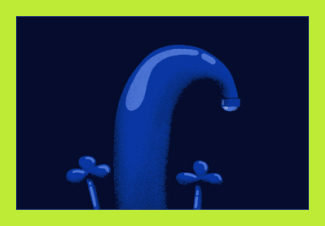
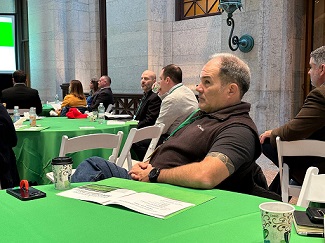



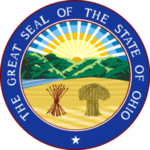 This year, our participation in this grassroots effort is more important than ever before.
This year, our participation in this grassroots effort is more important than ever before.

